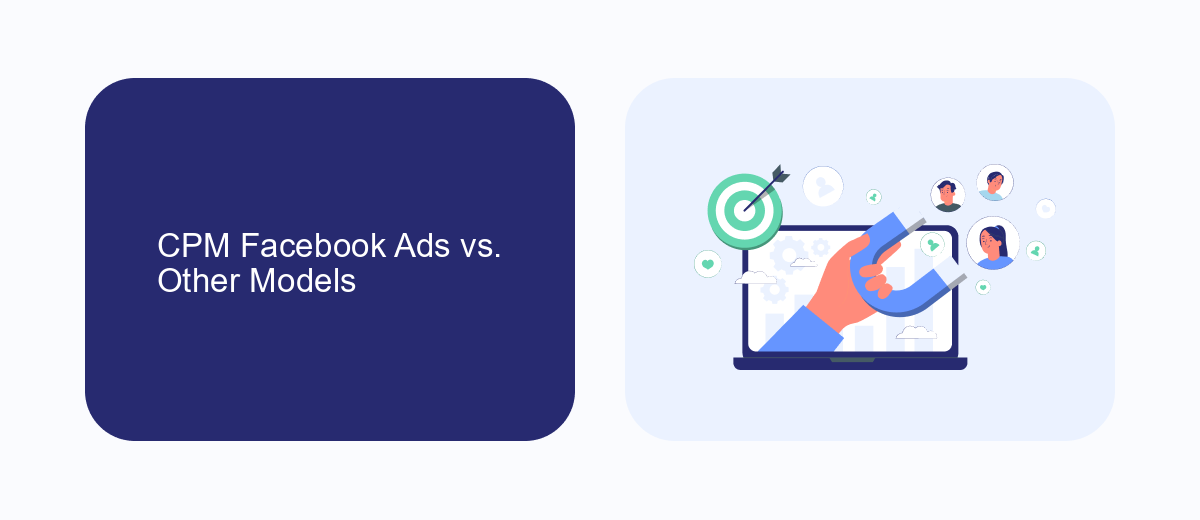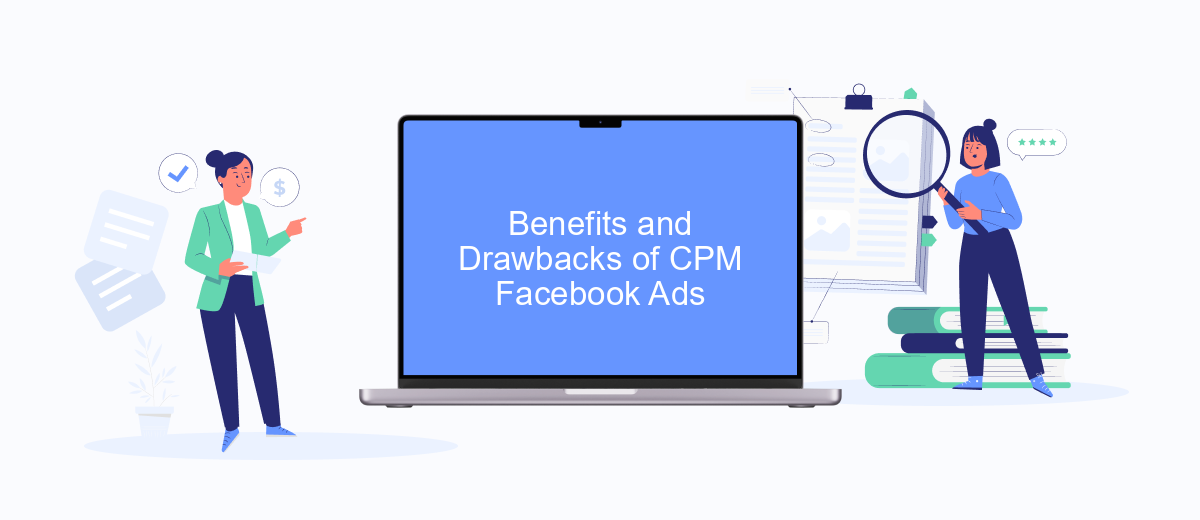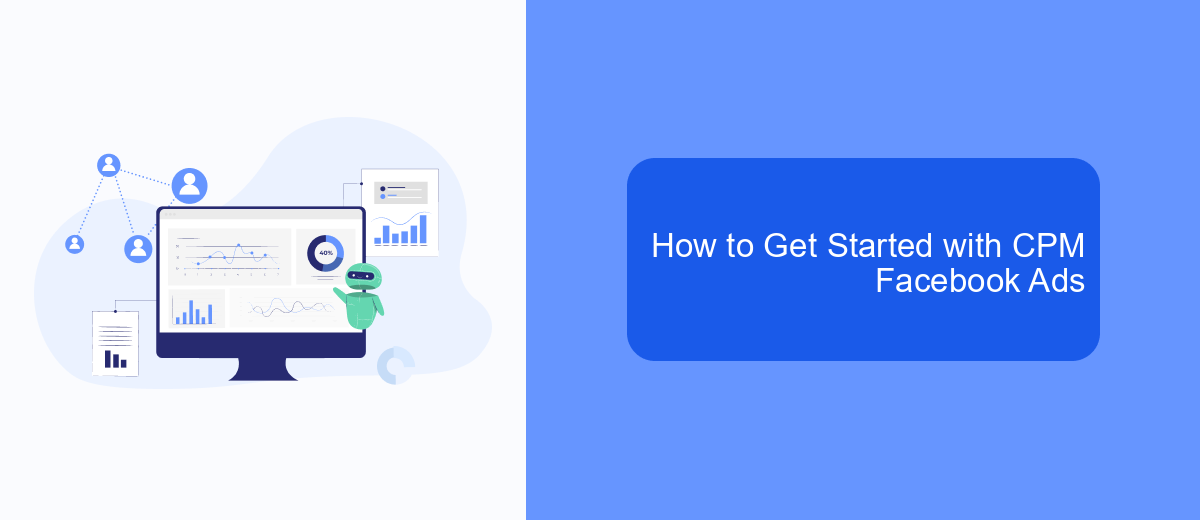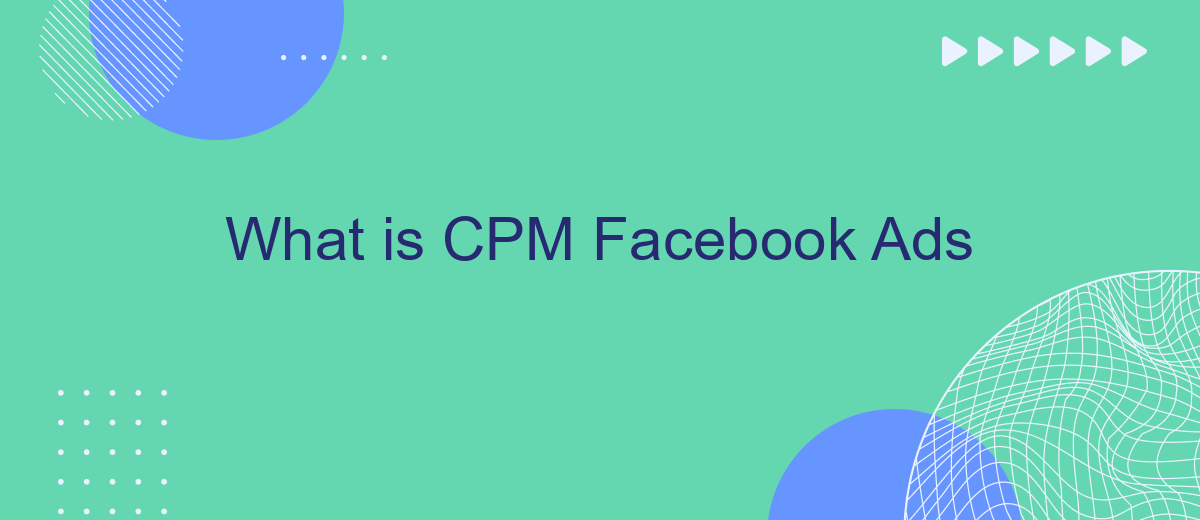CPM (Cost Per Mille) in Facebook Ads is a critical metric that measures the cost of 1,000 ad impressions. Understanding CPM is essential for advertisers aiming to optimize their budgets and maximize reach. This article delves into what CPM means, how it works within Facebook's advertising ecosystem, and strategies to manage and reduce your CPM for more effective campaigns.
CPM Facebook Ads Overview
CPM (Cost Per Mille) in Facebook Ads is a metric that represents the cost of 1,000 ad impressions. This pricing model is commonly used in digital marketing to measure the effectiveness and efficiency of ad campaigns. By understanding CPM, advertisers can better allocate their budget and optimize their ad performance on Facebook.
- CPM helps in comparing the cost-effectiveness of different ad campaigns.
- It provides insights into the reach and visibility of your ads.
- CPM is crucial for budget planning and management.
For businesses looking to streamline their Facebook Ads campaigns, integrating with automation services like SaveMyLeads can be highly beneficial. SaveMyLeads allows you to automate lead generation and data transfer processes, ensuring that your ad campaigns run smoothly and efficiently. By leveraging such tools, you can focus more on strategic planning and less on manual tasks.
CPM Facebook Ads vs. Other Models

When comparing CPM Facebook Ads to other advertising models, it’s essential to understand the unique advantages and limitations of each. CPM, or Cost Per Mille, charges advertisers a set fee for every thousand impressions their ad receives. This model is particularly effective for brand awareness campaigns, where the primary goal is to reach as many people as possible rather than driving immediate actions like clicks or conversions. In contrast, CPC (Cost Per Click) and CPA (Cost Per Action) models charge advertisers only when a user clicks on an ad or completes a specific action, making them more cost-effective for performance-driven campaigns.
One of the key benefits of using CPM Facebook Ads is the ability to predict and control advertising costs more accurately. However, to maximize the effectiveness of CPM campaigns, integrating various marketing tools and services can be crucial. For instance, SaveMyLeads offers seamless integration solutions that help businesses automate their lead generation processes, ensuring that the data collected from CPM campaigns is efficiently managed and utilized. This not only enhances the overall efficiency of marketing efforts but also optimizes the return on investment (ROI) for CPM advertising.
Benefits and Drawbacks of CPM Facebook Ads

CPM (Cost Per Thousand Impressions) Facebook Ads offer a unique approach to advertising by charging advertisers based on the number of times their ad is shown. This model is particularly beneficial for businesses aiming to increase brand awareness and reach a broad audience.
- Benefits:
- Wide Reach: CPM ads can be seen by a large number of people, making them ideal for brand exposure.
- Cost Control: Advertisers can manage their budget effectively by setting a maximum spend.
- Performance Tracking: Facebook provides detailed analytics to monitor ad performance and adjust strategies accordingly.
- Drawbacks:
- High Costs: CPM can become expensive, especially if the ad does not convert well.
- Less Targeted: Broad reach might mean that ads are shown to users who are not interested in the product or service.
- Ad Fatigue: Frequent exposure can lead to ad fatigue, where users become desensitized to the ads.
To optimize CPM Facebook Ads, integrating with services like SaveMyLeads can be beneficial. SaveMyLeads automates lead processing, ensuring that businesses can efficiently follow up with potential customers and maximize the return on their advertising investment.
How to Get Started with CPM Facebook Ads

Getting started with CPM Facebook Ads is straightforward, but it requires a clear strategy and understanding of your target audience. First, ensure your Facebook Business Manager account is set up and linked to your Facebook Page. This platform is essential for managing your ads and tracking their performance.
Next, define your campaign objectives. Whether you aim to increase brand awareness, drive traffic, or boost conversions, having a clear goal is crucial. Once your objectives are set, you can start creating your ad campaign by selecting the 'Create Ad' option in the Ads Manager.
- Choose the 'Reach' objective to optimize for CPM.
- Define your target audience using detailed demographics, interests, and behaviors.
- Set your budget and schedule for the campaign.
- Create compelling ad creatives that resonate with your audience.
- Review and publish your campaign.
To streamline your workflow and improve efficiency, consider using integration services like SaveMyLeads. This tool automates data transfer between Facebook Lead Ads and your CRM or email marketing software, ensuring you never miss a lead and can respond promptly.
Additional Tips for Optimizing CPM Facebook Ads
To optimize your CPM Facebook Ads, start by refining your target audience. Utilize Facebook's advanced targeting options to ensure your ads are reaching the most relevant users. This can include demographic filters, interests, and behaviors. Narrowing down your audience can significantly improve your ad performance, leading to a lower CPM. Additionally, experiment with different ad formats and creatives to see which ones resonate best with your audience. A/B testing can help you identify the most effective combinations, ultimately driving down costs.
Another crucial tip is to leverage automation tools and integrations to streamline your ad management process. Services like SaveMyLeads can automatically transfer leads from your Facebook ads to your CRM or email marketing platform, ensuring no potential customer falls through the cracks. This not only saves time but also improves your conversion rates, which can positively impact your CPM. Regularly monitor your ad performance and make data-driven adjustments to maintain optimal results. By staying proactive and utilizing the right tools, you can achieve more efficient and cost-effective Facebook ad campaigns.
- Automate the work with leads from the Facebook advertising account
- Empower with integrations and instant transfer of leads
- Don't spend money on developers or integrators
- Save time by automating routine tasks
FAQ
What is CPM in Facebook Ads?
How is CPM calculated in Facebook Ads?
Why is CPM important in Facebook Ads?
How can I lower my CPM on Facebook Ads?
Can I automate the process of optimizing my Facebook Ads CPM?
Personalized responses to new clients from Facebook/Instagram. Receiving data on new orders in real time. Prompt delivery of information to all employees who are involved in lead processing. All this can be done automatically. With the SaveMyLeads service, you will be able to easily create integrations for Facebook Lead Ads and implement automation. Set up the integration once and let it do the chores every day.

